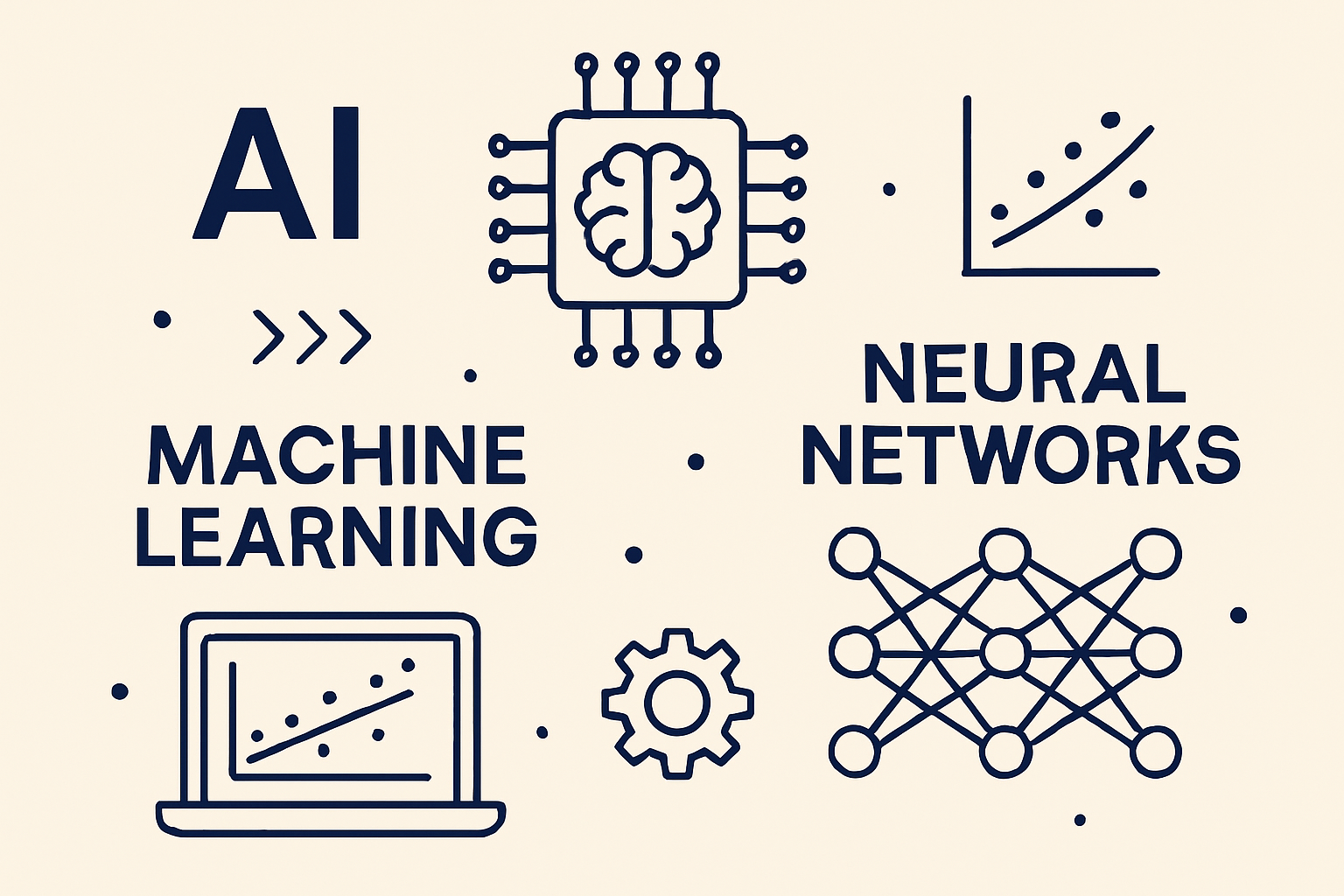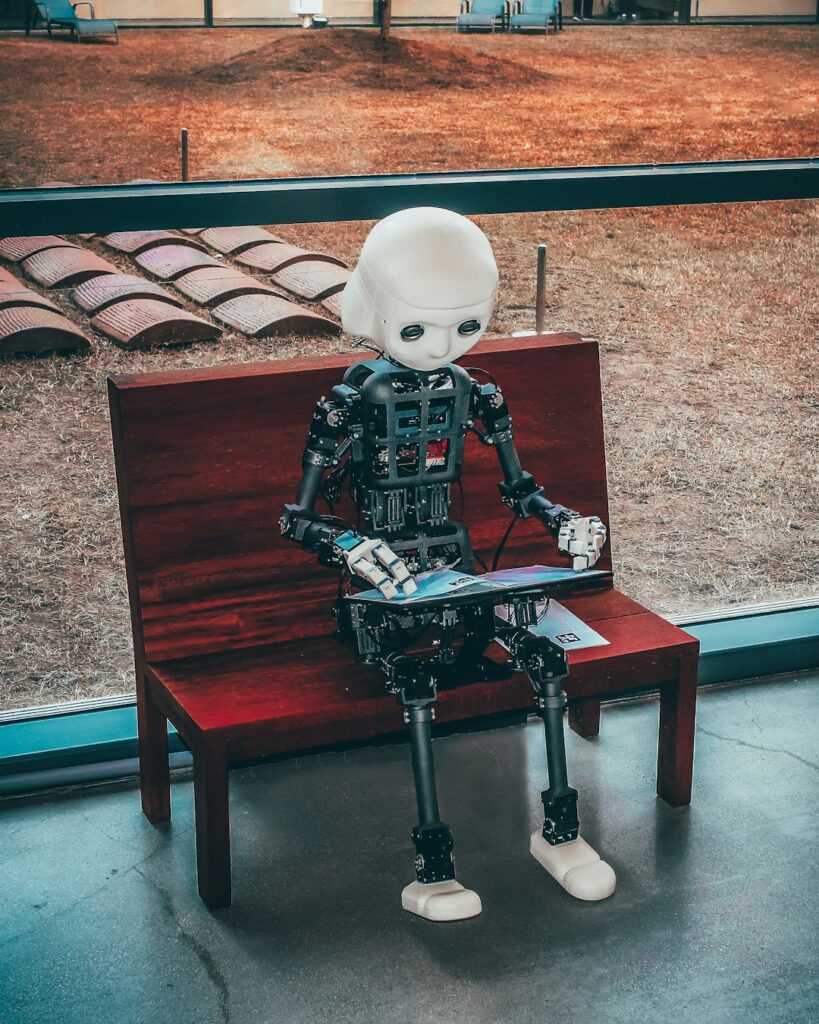Artificial Intelligence is everywhere — from Netflix recommendations and banking chatbots to data analytics and predictive applications that seem to know what we want before we do.
But what do all these buzzwords really mean? What’s Machine Learning? How does Deep Learning relate to Neural Networks?
And why did it take decades for these technologies to become part of our everyday lives?
Let’s zoom out and look at the big picture.
From Netflix to “Smart” Software
One of the clearest examples of AI in action is Netflix.
Every time you watch something, Netflix learns from your behavior — and from millions of users like you.
It analyzes viewing patterns, genres, pause times, and even how long it takes before you continue a show.
This is Machine Learning in practice: a system that predicts what you’ll like, not because someone hardcoded the rules, but because it learned from data.
The Era of Symbolic AI
Before Machine Learning, there was Symbolic AI — the attempt to teach machines how to reason using explicit rules and symbols.
For example: if something has feathers, a beak, and flies, then it’s probably a bird.
That approach works for simple problems, but collapses when reality becomes too complex or ambiguous — like recognizing a face or understanding natural language.
Symbolic AI was a great first step, but it couldn’t scale. We needed a new paradigm: systems that learn from experience.
The Rise of Machine Learning
Machine Learning (ML) is about teaching computers to improve through experience — that is, through data — without explicitly programming them for every situation.
Think of an email spam filter.
We don’t write every possible rule for spam.
Instead, we feed the system examples:
- “This is spam.”
- “This isn’t.”
The system learns patterns, adapts, and becomes better with time.
It’s software that evolves through feedback.
From Symbolic Logic to Learning Systems
This shift wasn’t just technical — it was philosophical.
We moved from “if…then…” logic to systems that observe, learn, and predict.
That transition changed everything about how we build technology, bringing machines closer to how humans perceive and reason about the world.
The Main Branches of Machine Learning
Machine Learning comes in several “flavors,” each with its own way of learning from data.
1️⃣ Supervised Learning
We train the system with labeled data — we already know the correct answers.
Example: image recognition.
Feed it thousands of pictures of cats and dogs, each labeled correctly, and it learns to distinguish them.
Then it can identify new, unseen examples with remarkable accuracy.
2️⃣ Unsupervised Learning
Here, there are no labels. The system must find hidden structures or groupings on its own.
Example: Netflix clusters users with similar viewing habits — not because we told it to, but because it detected patterns.
3️⃣ Reinforcement Learning
The system learns by trial and error, receiving rewards for good decisions and penalties for bad ones.
This method powers robots, self-driving cars, and even the AI agents that defeated human champions in games like Go or StarCraft.
Neural Networks and Deep Learning
Neural Networks are the digital analog of the human brain — made up of layers of interconnected “neurons” that process data at increasing levels of abstraction.
- Early layers detect simple features (lines, shapes).
- Deeper layers combine them into complex patterns (objects, faces, meanings).
- The result: a machine that can see, hear, and understand.
When these networks become large and multi-layered, we call it Deep Learning — the force behind modern breakthroughs in speech recognition, computer vision, and generative AI.
Why It Took So Long
Neural Networks aren’t new — they date back to the 1950s.
So why the sudden boom in the 2010s?
Two things finally aligned:
- Data: Machine Learning needs massive datasets to learn effectively.
- Computing Power: GPUs and cloud infrastructure made it possible to train large models quickly and affordably.
Once data and computing converged, theory became reality — and AI took off.
The Future of AI: From Automation to Collaboration
The real promise of AI isn’t to replace humans but to augment us.
It helps us detect insights hidden in oceans of data, optimize decisions, and anticipate problems before they arise.
From waste management and logistics to healthcare and finance, AI is becoming the invisible infrastructure of modern efficiency and sustainability.
The key question is no longer “What can machines do?” but
“What can we achieve together with them?”


